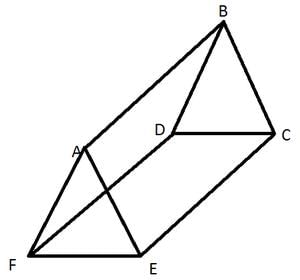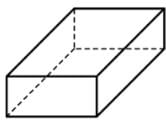Test: Visualising Solid Shapes - Year 5 MCQ
20 Questions MCQ Test - Test: Visualising Solid Shapes
The number of faces of a square pyramid is _______.
The number of faces of a triangular pyramid or tetrahedron is _______.
The number of triangular faces of a triangular prism is _______.
The number of rectangular faces of a triangular prism is _______.
The number of triangular faces of a rectangular pyramid is _______.
Which of the following objects is shaped like a sphere?
The number of edges of a triangular prism is _______.
The number of edges of a square pyramid is _______.
The number of edges of a triangular pyramid is _______.
The number of edges of a rectangular pyramid is _______.
The number of faces of a triangular prism is _______.
The number of faces of a rectangular prism is _______.
The corners of a solid shape are called its ________.
A _______ is a skeleton-outline of a solid that can be folded to make it
















